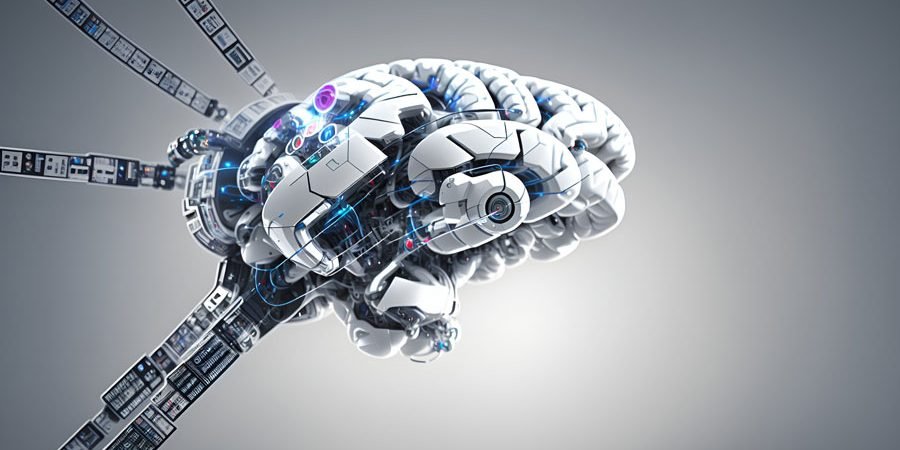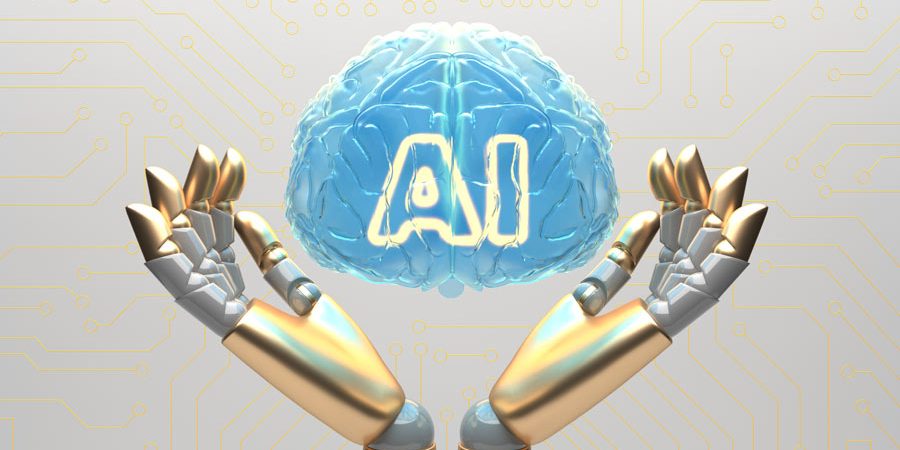It is reasonable to think of the implications of artificial intelligence in Industry 4.0 coming in leaps and bounds, but we are not there yet.
Artificial intelligence is already part of our everyday environment, whether we are aware of it or not. That’s why today we discuss all those uses of artificial intelligence that already exist:
Types of AI use: We can distinguish two types of AI applications to improve people’s day-to-day lives.
Software/Methodology: Voice assistants, image recognition to unlock faces on cell phones, and ML-based financial fraud detection are examples of AI software currently in use in everyday life.
Native/Hardware: Drones, autonomous vehicles, assembly line robots, and the Internet of Things (IoT) are examples of AI applications in hardware.
Examples of how AI improves our daily lives. AI and ML-based software and devices mimic human thought processes to help society thrive in the digital revolution.
How does artificial intelligence improve social networks? People regularly check their social media accounts such as Facebook, Twitter, Instagram, and other platforms. Twitter Has begun using artificial intelligence behind the scenes to improve its product, from suggesting tweets to combating offensive or racist material and improving user experience. Facebook Deep learning is helping Facebook extract value from a growing body of its unstructured data sets, drawn from nearly 2 billion users who update their status 293,000 times per minute. Instagram Instagram is also using big data and artificial intelligence to target ads, combat cyberbullying, and remove offensive comments. Chatbots Chatbots are artificial intelligence programs that can answer questions and provide relevant content to consumers with frequently asked questions. Artificial intelligence in day-to-day processes. Autonomous cars and aircraft Drones, or unmanned aerial vehicles (UAVs), are already in the air, performing surveillance tasks and providing delivery services in a variety of plans.
The autonomous car market is still in its infancy, but there are enough prototypes and pilot projects to show that autonomous cars will become more common as artificial intelligence and Internet of Things (IoT) technologies improve. Digital assistant Virtual assistants such as Alexa, Siri, Cortana, and Google Assistant have made our lives easier. This software recognizes voice patterns and provides natural language processing capabilities.
Food platforms When it’s time to eat, apps and online ordering sites often send you interesting notifications about breakfast, lunch, and dinner.
Streaming music and multimedia content The next time you play recommended videos on YouTube, watch recommended shows on Netflix or watch other media, don’t forget that AI is also involved.
Plagiarism If you’re a teacher grading essays, you’re probably facing the same problem.
The knowledge and data available are almost limitless and are exploited by malicious students and employees. Banking Banks are now using artificial intelligence (AI) and machine learning software to read handwritten signatures and approve checks that are risk-free compared to what banks were previously presented with.
E-commerce Automated warehouses and AI-powered supply chain management systems can help trading companies better manage their logistics.
Travel and location Artificial intelligence algorithms can only check satellite images that are updated every second.
These digital maps are created simultaneously from satellite images that incorporate information about bike lanes and parking spaces.
Cab service For-hire cars like Uber and Lyft are very convenient because they can provide you with a car when you need one.
Automated response When composing a new email, the program suggests possible responses. Some email systems also include features that notify users when it’s time to send a message.
Video games AI and similar technologies can be found in various video games, including racing, shooting, and strategy games. Job seeker These applications use software that helps consumers discover the best prospects by suggesting jobs, roles, employees, and other relevant information.
Security and surveillance While everyone may disagree about the ethics of using such systems, there is no doubt that they are being used, and AI plays a major role in that.
Smart home But these AI applications are not limited to smart voice assistants like Alexa and Bixby.
These AI apps save energy by automatically turning lights on and off based on human presence, smart speakers, apps that adjust the light color based on the time of day, and more. Google’s predictive search algorithm. No doubt, every time you try to search for something on Google, you will see some autocomplete search terms in the search bar.
Google uses various technologies such as neural networks, deep learning, machine learning, and artificial intelligence in its search engine.
Internet of Things The convergence of AI and the Internet of Things (IoT) offers endless opportunities to create smarter home technologies that require less human intervention to operate.
Creating, communicating, aggregating, analyzing, and acting are the five main phases of IoT enablement.
Recipes and cooking However, it is also useful for a variety of activities outside the typical scope of AI research.
Rasa has developed an AI system that analyzes food and creates recipes based on what you have in your kitchen and pantry. Auto-correction Autocorrect doesn’t just correct typos. It also suggests to the user the next word in a sentence, an essential aid for those who type quickly.
Medical use This device is used to identify and treat damaged tissue. Google’s AI Eye Doctor is working with the Indian eye care chain to develop a treatment for diabetic retinopathy, a disease that causes blindness.
Conclusion Artificial intelligence is evolving due to continuous improvements in the data available to machine learning algorithms. This allows trained ML models to perform better on real user data, making AI work more effectively.














